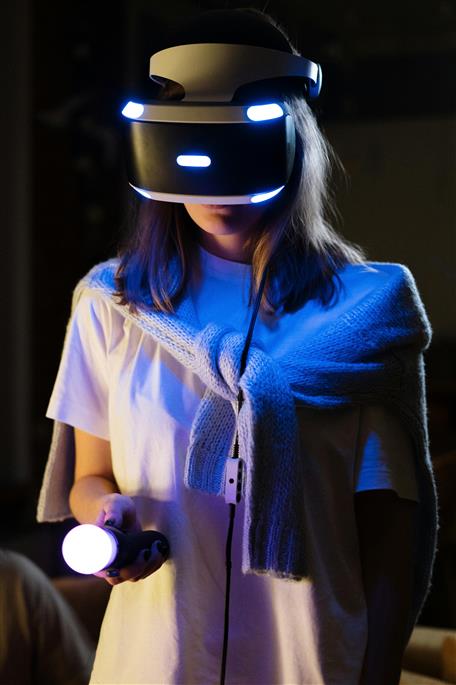
In an age where athletes can livestream their workouts to millions and fans can simulate an entire NBA season on their phones, the line between digital and physical sports is thinner than ever. Now, a new frontier is beginning to take shape—Virtual Reality Leagues—where entire competitions exist solely within a headset.
No stadium. No physical ball. Just digital bodies in digital arenas, playing games that didn’t exist a decade ago.
It sounds futuristic, maybe even gimmicky. But slowly and steadily, VR-based sports are becoming more than just tech demos or gamer curiosities. The question is no longer whether they’ll exist—but whether fans will actually care to watch.
What Is a VR League, Really?
First, let’s clear something up: this isn’t about streaming a traditional sport in virtual reality. VR leagues are not just new ways to watch sports—they’re new sports altogether.
Picture two players in motion-tracking suits and headsets, battling it out in a zero-gravity arena, their real-world movements mapped into an entirely virtual environment. The crowd? Also virtual. The rules? Invented from scratch. The experience? Closer to Tron than the Premier League.
Some of these leagues are already active. Games like Echo Arena, Blaston, and VRML (Virtual Reality Master League) have built dedicated communities around competitions that happen entirely in VR. Players train, compete, and even suffer “VR injuries” like strained shoulders or motion sickness. It’s not a gimmick—it’s a grind.

From Controller to Athlete
One of the most interesting elements of VR-based sports is the shift from button-mashing to full-body engagement. Unlike traditional esports, where lightning-fast reflexes and hand-eye coordination reign supreme, VR games demand physical stamina, spatial awareness, and actual movement.
In this way, VR athletes start to resemble their traditional counterparts. They warm up. They train. They sweat. Watching them compete, even if it’s through an avatar, starts to feel oddly familiar—less like a video game, more like a real sport with digital skin.
This blurring of boundaries makes VR leagues feel like a bridge between esports and athletics, rather than just another gaming offshoot.
So, Who’s Watching?
That’s the challenge. Right now, VR leagues still live in niche corners of Twitch and YouTube, drawing in devoted fans but rarely crossing over into mainstream attention. Part of the issue is visibility—it’s hard to appreciate the skill or intensity of a VR match without donning the headset yourself.
Spectating is an awkward experience. Viewers often toggle between third-person camera angles, shaky POV feeds, or stylized overlays that attempt to make sense of the chaos. It’s a work in progress.
And yet, for younger audiences raised on digital-first experiences, this isn’t as much of a leap. Many Gen Z fans are already comfortable watching creators in Minecraft, Fortnite, or Roblox tournaments—worlds that don’t physically exist but still feel meaningful. The emotional connection is there, even if the rules of physics aren’t.
The Tech is Catching Up—Sort Of
Hardware remains a barrier. Despite major strides, VR headsets are still relatively expensive, and even the best ones can’t fully replicate the feeling of presence across a livestream.
The production side is also tricky. Capturing a match from inside a virtual space demands entirely new workflows—3D cameras, real-time rendering, commentary overlays. It’s not as simple as pointing a camera at a field.
Still, tools are improving. Some developers are experimenting with fully rendered spectator modes, allowing fans to step into the arena themselves. Instead of watching on a flat screen, you could be hovering courtside in a virtual skybox, moving your perspective freely as the match unfolds.
If that vision becomes seamless—and accessible—it could change everything.
A New Type of Fandom
Traditional sports are built on legacy: the history, the rivalries, the generational loyalties. VR sports have none of that. What they do have, though, is flexibility. These leagues can adapt quickly, change rules, iterate on gameplay, and embrace fan feedback in real time.
That opens the door for fans to not just watch, but shape the experience. Want to see a sport where gravity works sideways? Or a tournament where the arena shrinks every few minutes? It’s all on the table.
For younger fans raised on customization and interactivity, this flexibility isn’t just appealing—it’s expected. They’re less concerned with authenticity and more interested in experience. They’re not looking to replicate the past. They want something new that reflects their own culture.
What Makes a Sport “Real”?
This is the deeper question. If a sport has rules, players, fans, competition, and emotion—does it matter whether it happens in physical space?
Skeptics argue that without real-world stakes, VR competitions can’t replicate the raw tension of traditional sports. There’s no mud, no injuries, no weather. But defenders counter that the emotional weight is just as real. If fans care, if players push themselves, if rivalries emerge—why shouldn’t it count?
In fact, the rise of VR leagues may force us to reconsider what we value most in sports. Is it the athleticism? The strategy? The connection? Or is it just the shared experience of watching something that makes us feel?

Where This Could Be Heading
It’s unlikely that VR sports will replace traditional ones. That’s not the goal. But they don’t need to. Just as esports carved out their own corner of the sports world, VR leagues could become a parallel ecosystem—one that appeals to a different kind of fan, or the same fan in a different mood.
What we may see is a new kind of hybrid event. A night at the arena might include a real basketball game and a VR showdown. Viewers might jump between physical and virtual competitions depending on their interest. The lines will continue to blur.
In the long run, VR leagues could also create new pathways for competition—especially for people who might not have the opportunity or access to traditional sports. No need for a gym. Just space to move and a headset. That democratization could become one of its biggest strengths.
Final Thoughts
We’re not quite there yet. VR leagues still face hurdles—technical, financial, and cultural. But the pieces are moving into place. The games are getting better. The players are getting serious. And slowly, fans are starting to show up.
Whether the world is ready to fully embrace digital-only sports remains to be seen. But if the last decade has taught us anything, it’s that the boundaries of what counts as “real” sport are a lot more flexible than we once thought.
The future of competition might not just be televised. It might be rendered.






